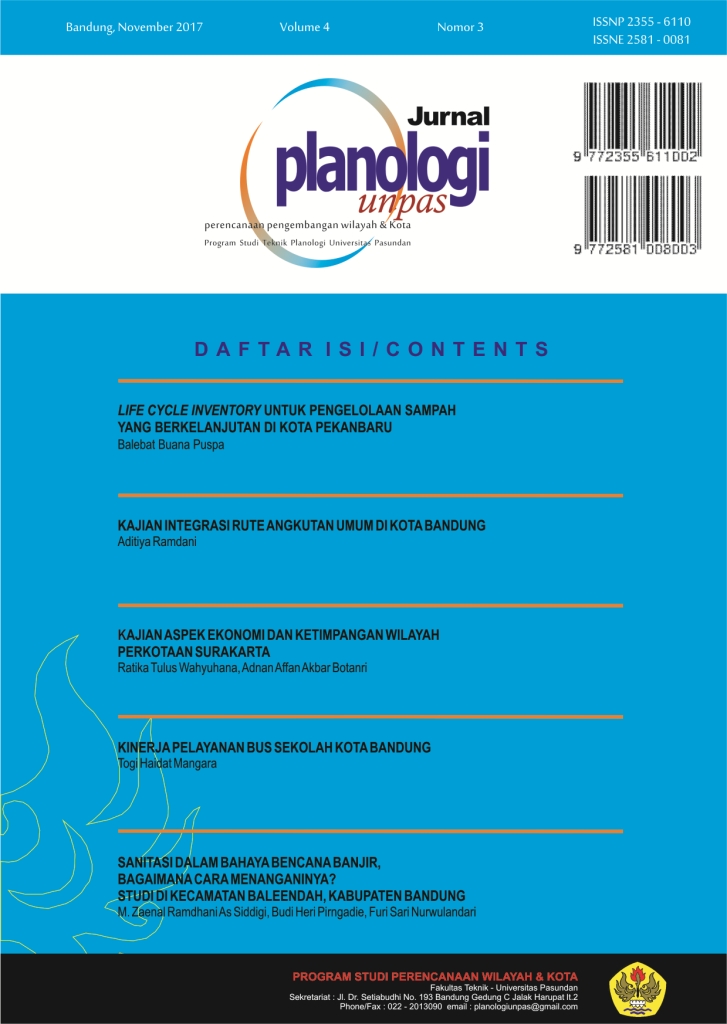The LIFE CYCLE INVENTORY FOR SUSTAINABLE SUSTAINABLE MANAGEMENT IN PEKANBARU CITY
Abstract
The large proportion of the population leads to a large municipal solid waste pile, about 4,579,356 m3/day. Approximately 84.99 percent of municipal waste in 2016 goes to Muara Fajar Final Disposal Site. This is due to the end of the pipeline paradigm in the community (from source to TPA) and relatively low levels of community participation. In addition, waste containing still mixed for each type of waste (recycled waste and non recyclable), garbage transport still using conventional methods, and Muara Fajar 1 landfill operates with an open dumping system. So solid waste still has many negative impacts. In fact, municipal solid waste has the potential and potential value of secondary and renewable energy to support sustainable solid waste management for sustainable development. Sustainable solid waste management can be achieved by optimizing the life cycle inventory in integrated solid waste management. This can be done through waste treatment units and community roles. With this utilization, garbage generated from households or commercial areas is not directly stockpiled, but used first through Waste Bank, Compost Unit, TPST - 3R, and RDF (refuse derived fuel). In this way, the solid waste that leads to the Muara Fajar landfill decreases to about 8.9 percent per year. This can improve the lifetime of a TPA operation that has an area of 5 Ha, from 1.5 years to 6 years.
Downloads



